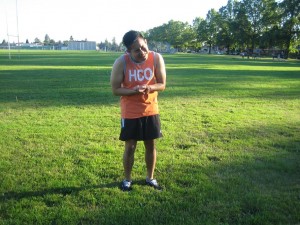Frostbite happens when the body is exposed to temperature that is below the freezing point of the skin. This causes freezing of the skin and some of the underlying tissues. Frostbite causes the skin to become numb, firm and pale. Some areas of the body such as the ears, nose, toes and fingers which are unprotected are highly susceptible to develop frostbite.
The first stage of frostbite is called as frostnip, which cause skin irritation in some areas of the skin but cause no damage. It can be treated by rewarming the skin. On the other hand, frostbite can be severe and causes damage to the skin and even some of the underlying tissues, bones and muscle.
Common symptoms of frostbite
- The skin becomes white, red or grayish in color
- Numbness of the affected area
- Pain
- Itchiness or a prickling sensation
- The skin becomes hardened
- Development of blisters
- Stiffness of the joints and muscles

Stages of frostbite
- Frostnip – the stage where the skin becomes cold and red. If continuous exposure the cold is not stopped, numbness and prickling sensation can occur.
- Superficial frostbite – the skin becomes pale or white and will be soft while the tissues will develop crystals.
- Severe frostbite – it damages all the layers of the skin, there is loss of sensation in the affected area and the muscles and joints cannot function anymore.
Causes of frostbite
- Leaving the skin uncovered and exposed to cold temperature
- Wearing clothes that do not provide adequate protection from the cold weather.
- Touching ice, cold packs or metals that are in a freezing temperature
- Staying out in cold weather for long periods of time.
Treatment and home remedies for frostbite
- Place the affected hands or fingers under the armpits or lie down and curl the body inwards so that warmth is generated.
- Avoid placing the affected areas under running water since it will make the condition worse.
- If the face is affected by frostbite, place dry, gloved hands over it in order to help generate warmth.
- If the fingers are affected by frostbite, remove any jewelry which can stop the circulation of blood and cause swelling.
- Fill up a bottle with hot water and roll it over under the feet. This helps in warming up the frostbitten toes, promotes proper circulation of blood and also helps with the healing of the affected area.
- Place a warm compress over the affected area for 3 minutes and then follow it up with cold compress for about half a minute. This helps in minimizing the symptoms of frostbite in the affected area.
- After the initial treatment of frostbite, soak the affected areas in warm water to improve the blood circulation and healing process.
- The individual should avoid drinking alcohol in order to prevent the body from losing more heat.
- Wear loose and comfortable clothing which enables proper circulation of blood in the body and also help in the fast recovery of the body parts that is affected by frostbite.
